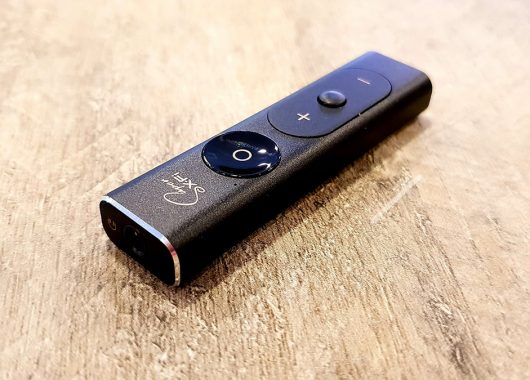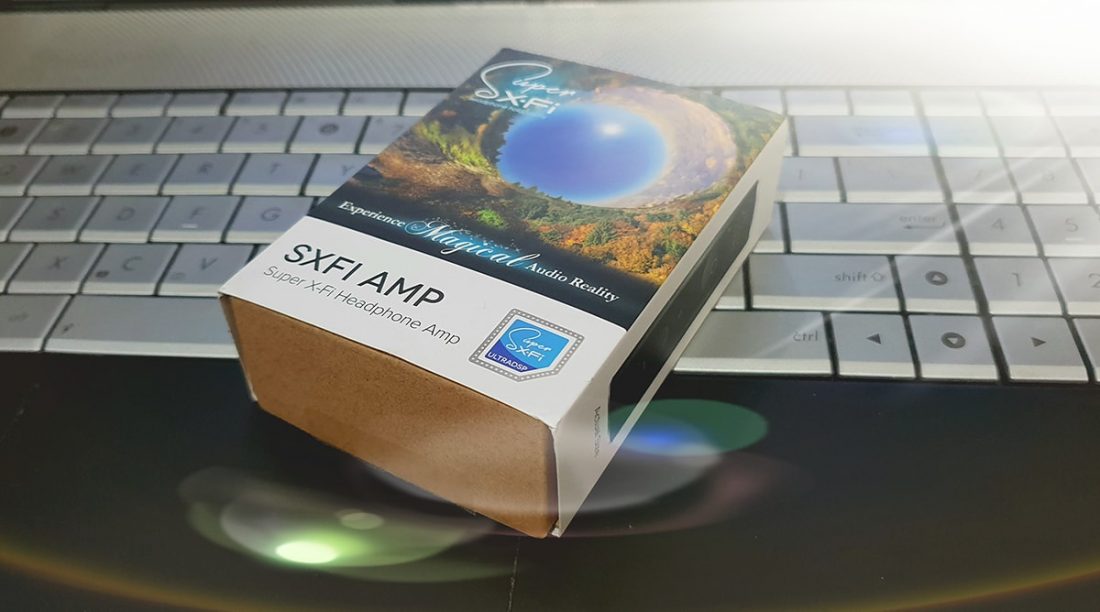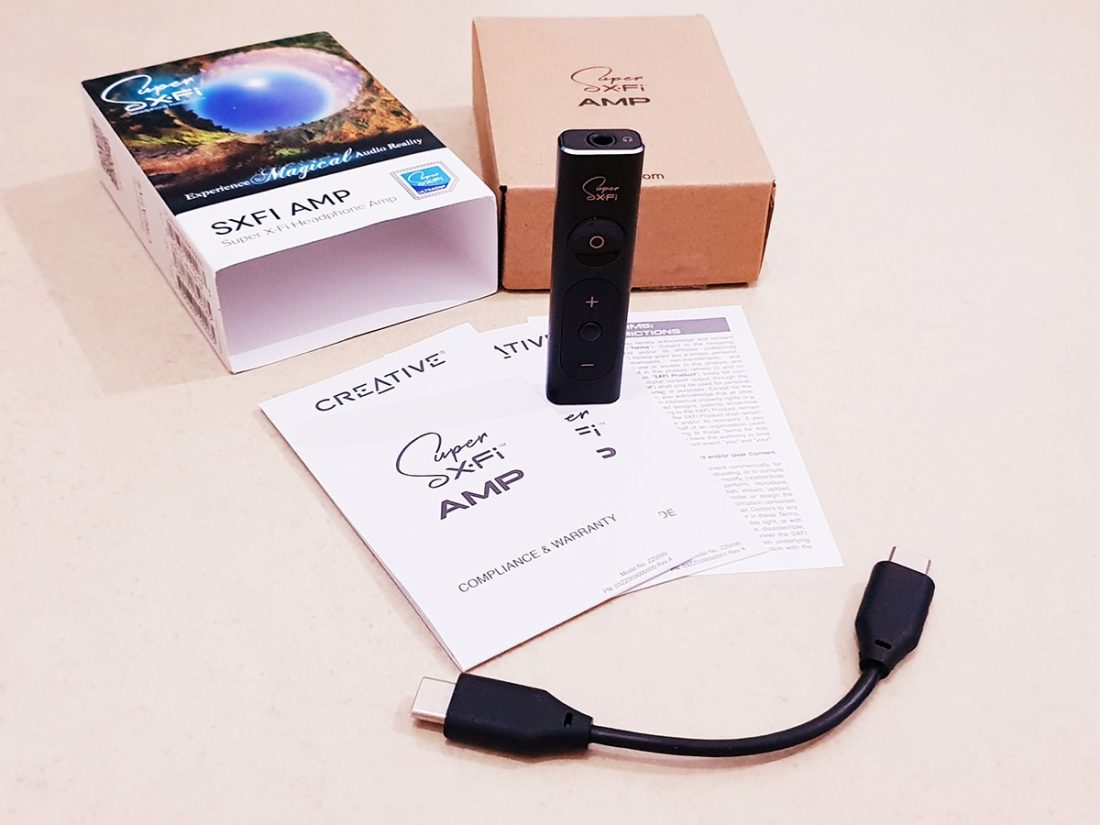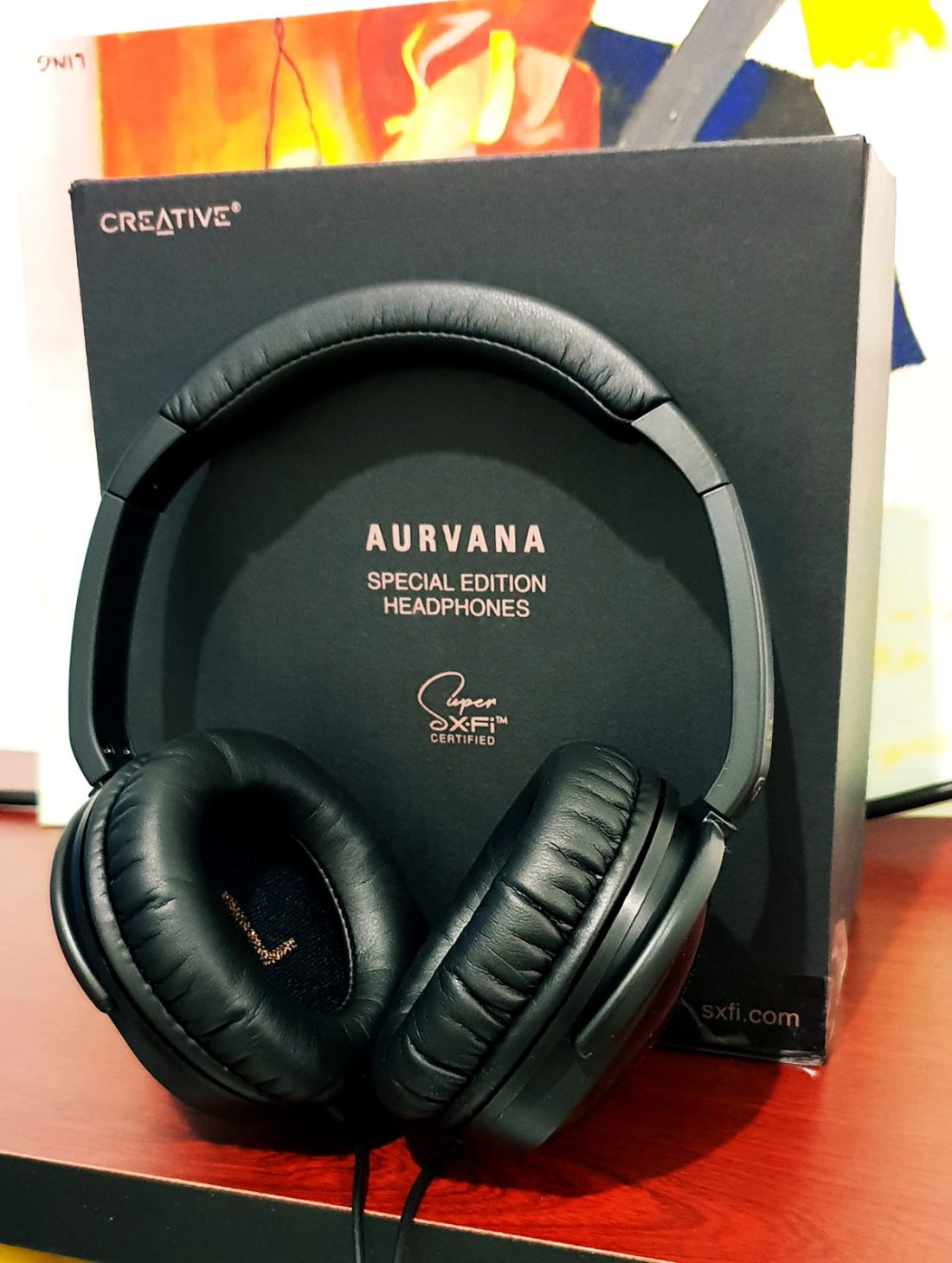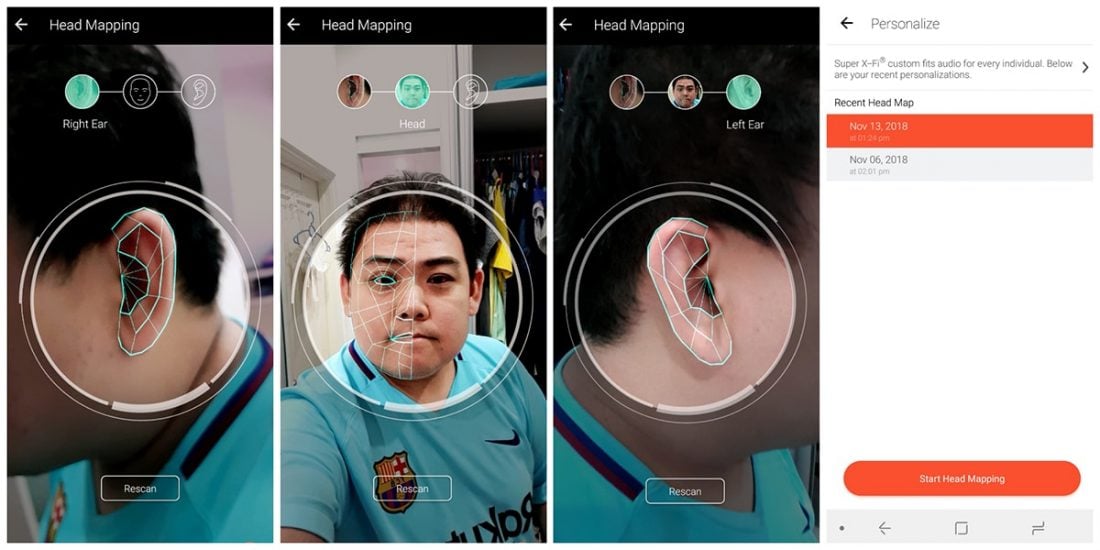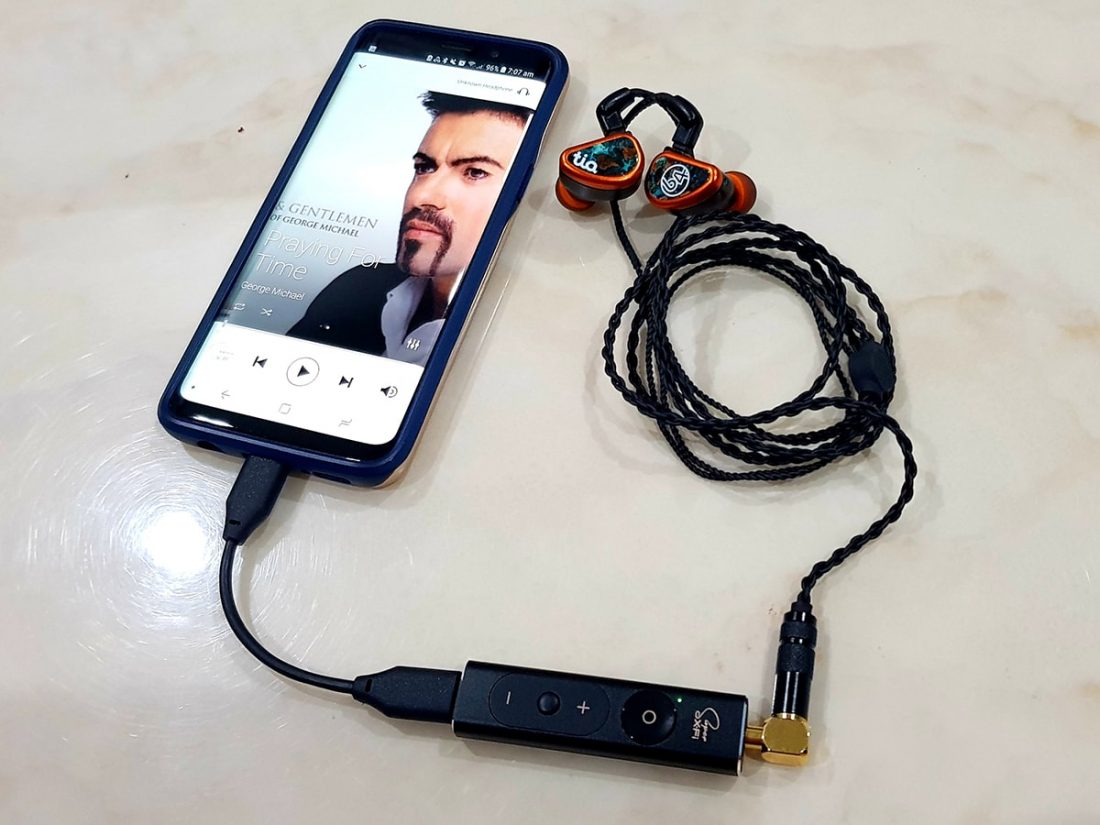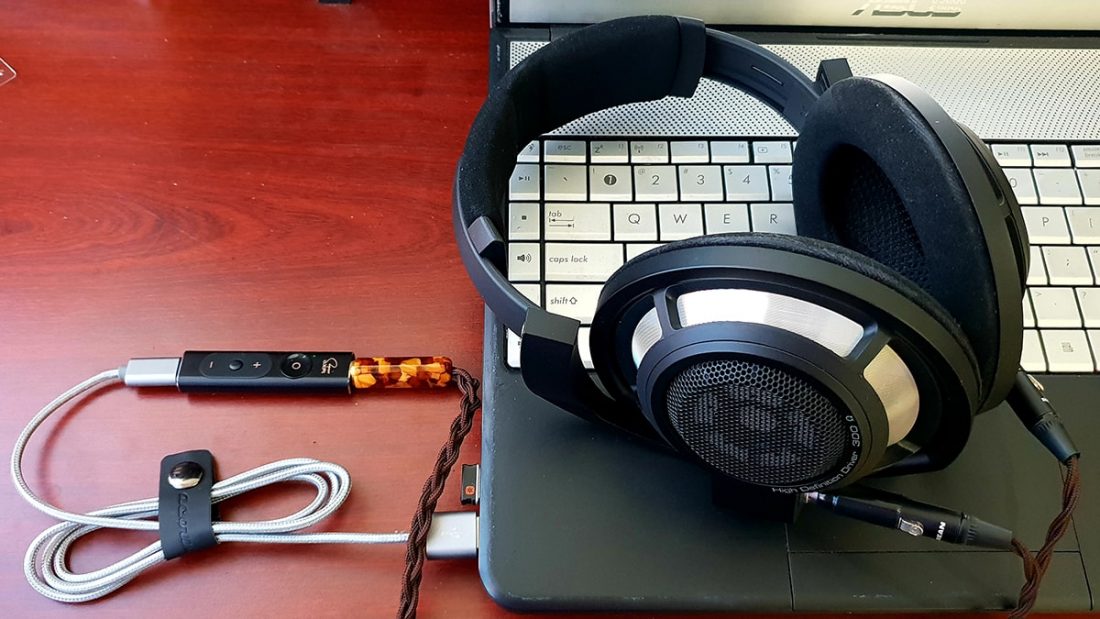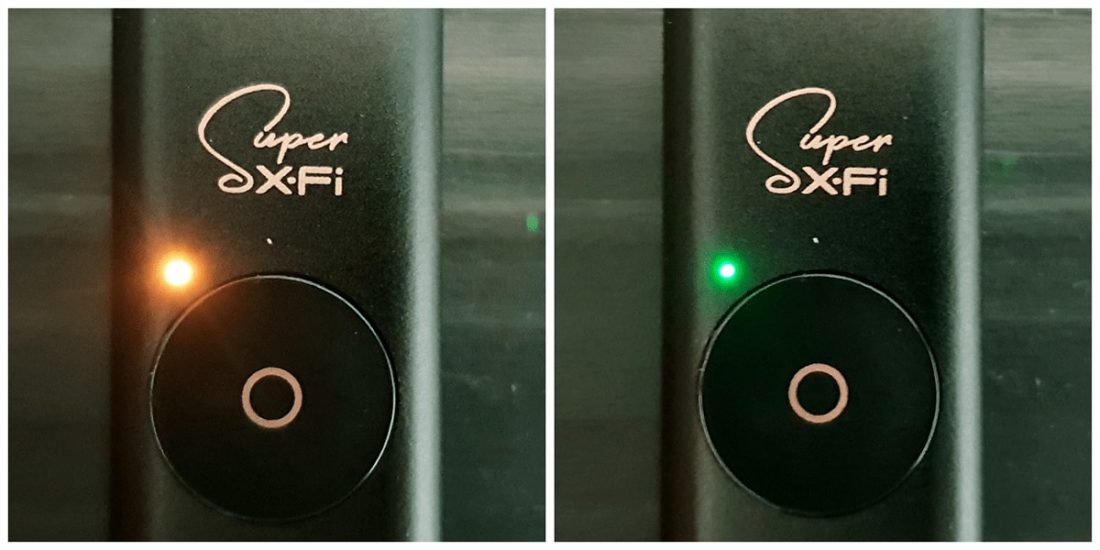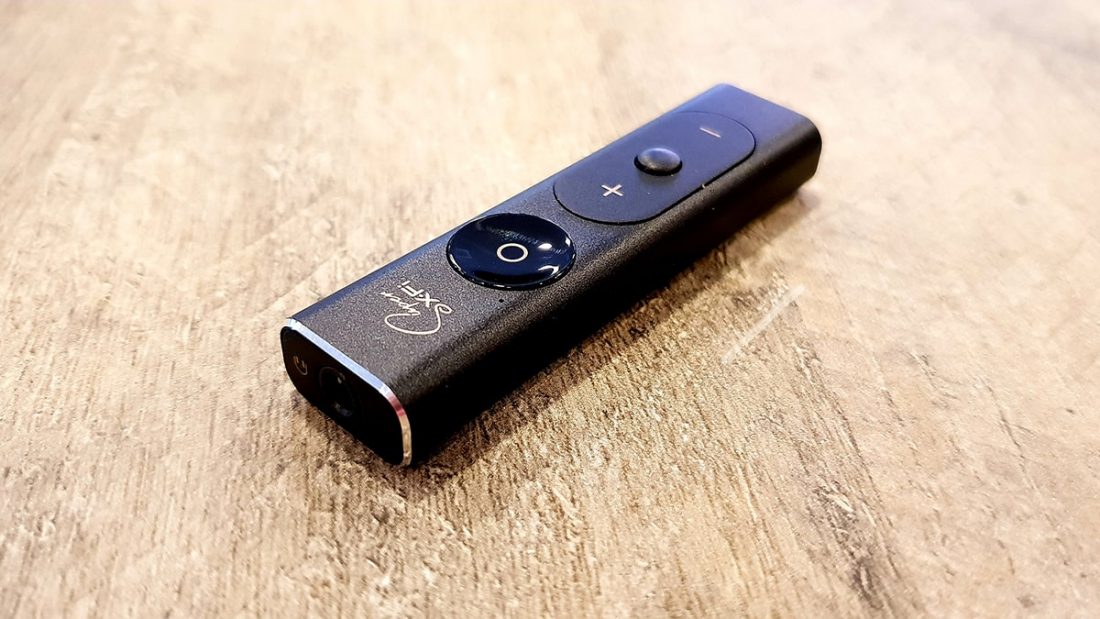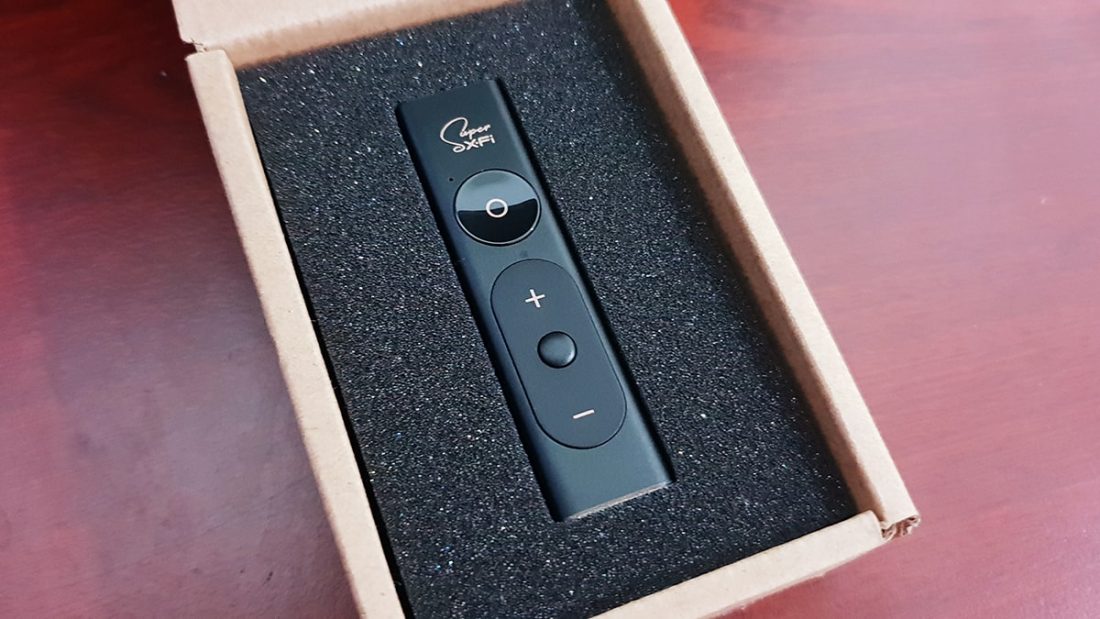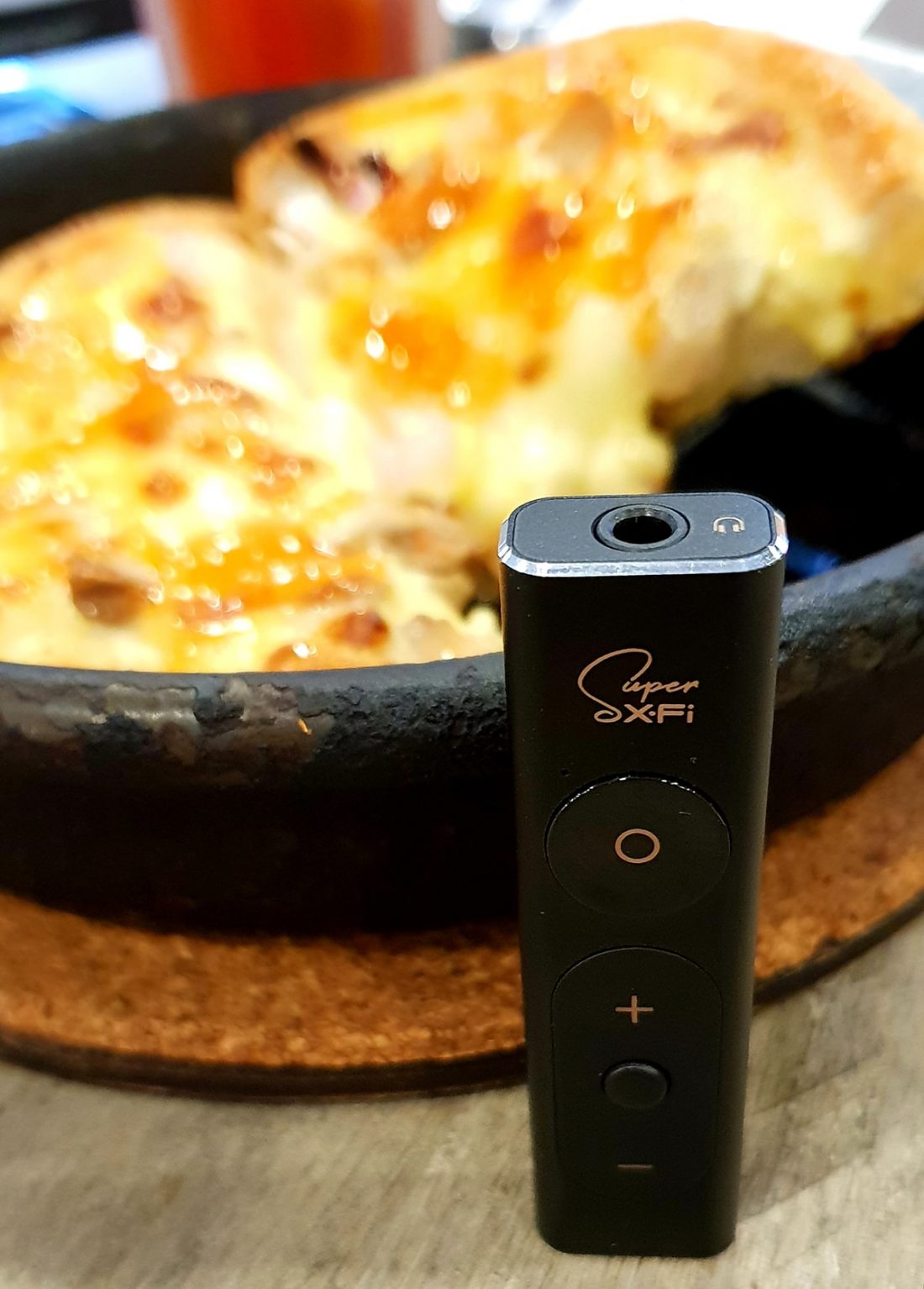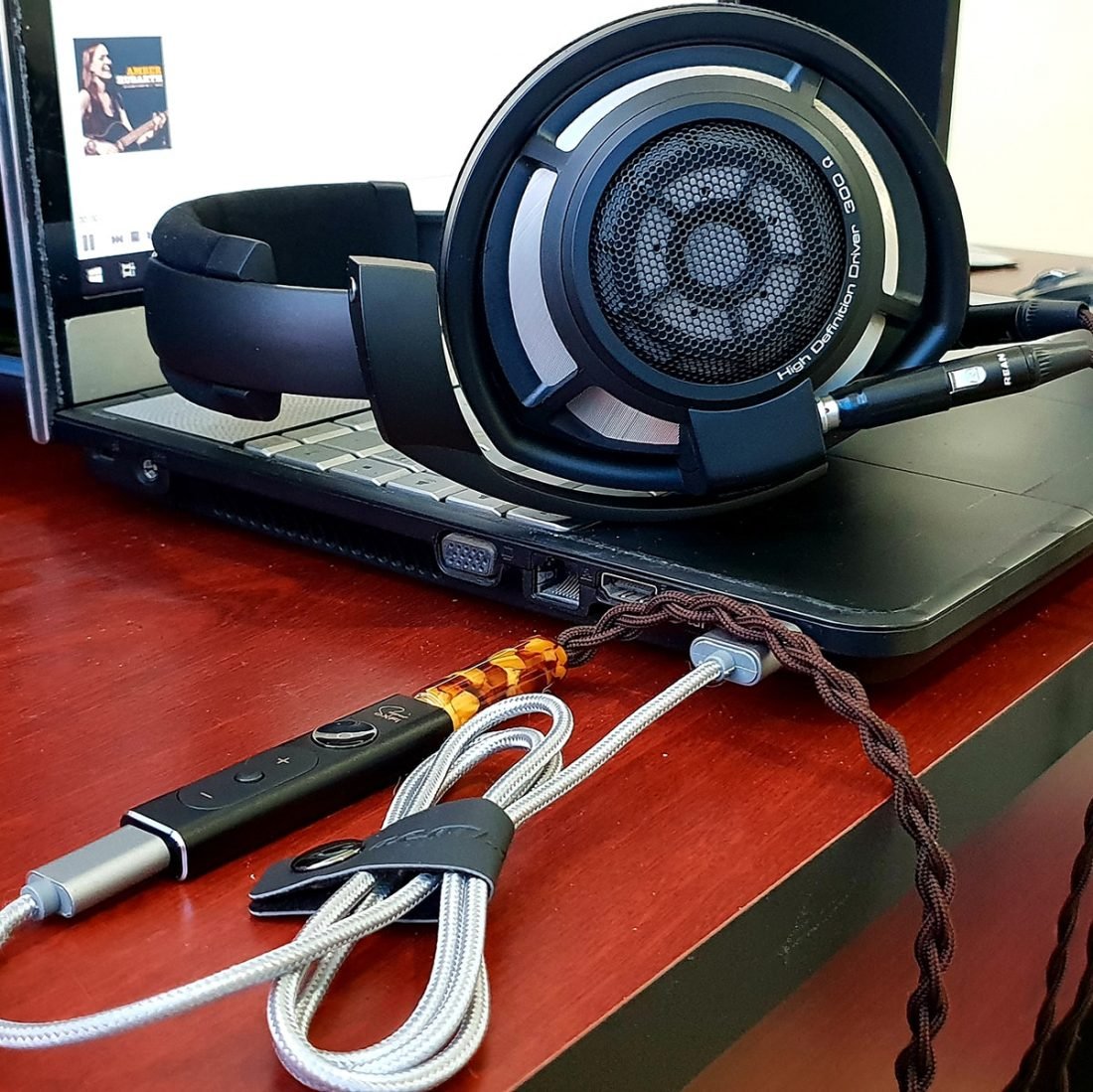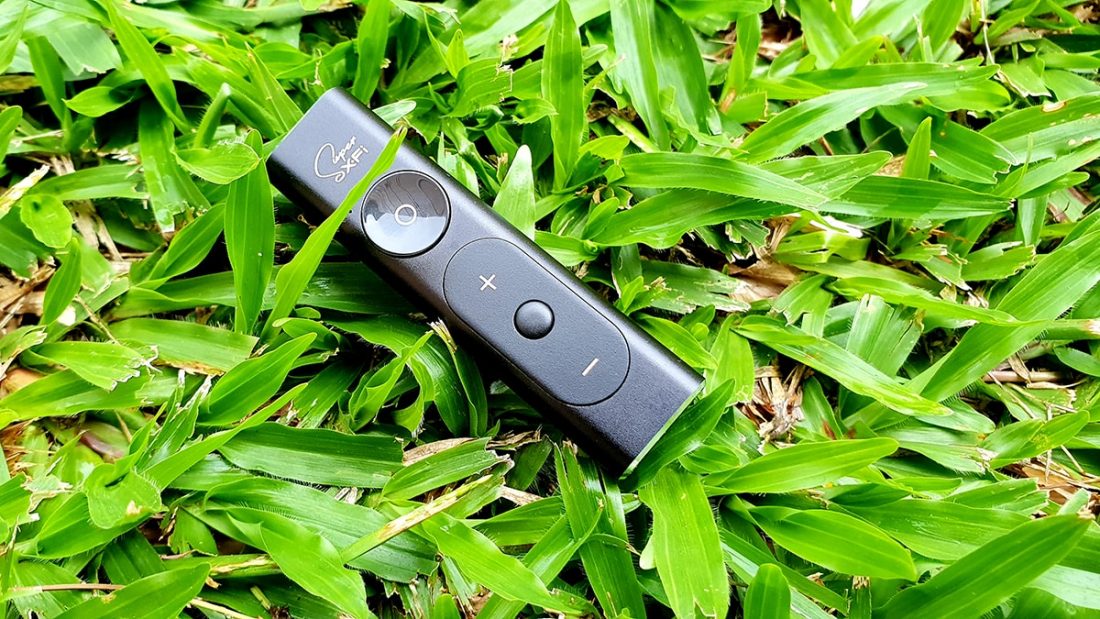Back in the 1990s, one brand was synonymous with consistently producing a broad range of consumer electronics and software solutions at the bleeding edge of technology. Yes, Microsoft. But not too far behind and closer to home, Creative weaved some magic of its own. Both of them had the pleasure of getting usurped by Apple’s irresistible ascent at the turn of the millennium, but that’s another story for another day. A wave of nostalgia washes over me when discussing Creative. Their broad product range, from GigaWorks computer speakers to Zen MP3 players, meant I always had a Creative product to consider when I wanted something… techy (not tacky). I had a Sound Blaster sound card at a time when no PC was without one, and fell madly in love with the EP-630 earphones before going hardcore. Good times.
Magic and Holography?
Recently the Singaporean brand has been turning heads again with its Super X-Fi (SXFI) headphone technology, by winning AVS Forums’ Best of CES 2018 in the world’s largest consumer electronics show. I hold in my hands one of the products, the SXFI Amp, a tiny dongle touted to recreate a Dolby Atmos-like, surround-sound holographic environment with headphones. This slideshow requires JavaScript. First off, like you, I too am a skeptic. People spend six figures for the speaker system of their dreams, and a tiny dongle hopes to touch that? It doesn’t help that the product website is full of hyperbole, marketing speak and people with orgasmic looks. There are similar products in the market, like the high-end Smyth Realiser A16 and the uh, 3D switch in iFi Audio stuff, so SXFI is not alone.
Street Cred
The SXFI Amp has some good hardware to bolster its credentials, or street cred, if we’re using 1990s slang. It houses a dedicated AKM AK4377 digital-to-analog converter (DAC), so we can expect better sound quality than smartphones. The amplifier is capable of 3x gain with the support of high-impedance headphones up to 600Ω, so it packs a serious punch, and maybe some firearms. The key to this 24 karat magic in the air, comes from a digital signal processing (DSP) chip which Creative dubs the Super X-Fi Ultra DSP. It’s a gargantuan name with a Herculean task, capable of decoding and processing up to 8 channels of 24-bit 96KHz of audio simultaneously. The website does imply that this is the best thing since sliced bread, so we’ll see about that. Creative’s SXFI Amp retails for SGD219 or USD150, currently available in Singapore and the US via their official sites only, before rolling out worldwide soonish. For early adopters, Creative’s Aurvana SE over-ear headphones are given free with the amp. The good news is it’s one of the certified headphones that take full advantage of Creative’s SXFI technology, so it’s win-win. I would like to thank my editor Colin for the loaner unit of the SXFI Amp. I have held onto them for a week’s evaluation before returning them, however reluctant.
Equipment Used:
Creative Super X-Fi Amp Samsung Galaxy S9 Asus N550L laptop Creative Aurvana SE 64 Audio Tia Fourte Sennheiser HD800S
Media Tested:
Amber Rubarth – Sessions from the 17th Ward Denean – The Weaving Michael Jackson – The Essential Taylor Swift – 1989 The Eagles – Hell Freezes Over YouTube videos with the search term “Dolby Atmos” Deadpool 2 Blu-ray
Packaging and Accessories
The box welcomes you with “Experience Magical Audio Reality”, in a fancy-schmancy font. There’s also artwork of trees, clouds, and stuff. I’m all for sci-fi/fantasy artwork, but promoting audio gear with them seems a bit odd. At the back of the box, the marketing jargon “Magical Super X-Fi Headphone Holography” proves they absolutely love the word “magical”. Alrighty then. Looking at the packaging, the casual customer might not know what the SXFI Amp does, while serious listeners will be turned off by the vague terms. But moving on, the simple packaging gets right to business with bare-bones accessories. There’s a quick-start guide, warranty information, USB-C cable, the SXFI Amp… that’s about it. I would have liked a short USB A-to-C cable included for PC/laptop connectivity.
Creative Aurvana SE
The bundled Aurvana Special Edition headphones (if you’re lucky enough to be one of the early adopters) have far better, professional-looking packaging. An all-black box containing all-black headphones. Right up my alley, actually. Or maybe I’m just grumpy. The proof of the pudding is in the listening as they say, since dodgy packaging won’t affect sound quality one bit. If it were up to me, I’d probably call the SXFI Amp a “surround sound emulator”, but using the word “emulator” already shows I’m an ancient relic of the 1990s hell-bent on reviving the allegedly glorious past. This is why I don’t work in marketing.
Design and Build Quality
It’s a dongle, so like smartphones, you can only go so far in terms of design. It’s a black Kit-Kat bar with buttons, ports, and a bit of chrome trim. There’s the SXFI effect on/off button, volume controls, USB-C port, and 3.5mm audio output. The SXFI Amp is crafted with a single aluminum unibody and looks built to last. It should survive a stampede or two, unless someone decides to eat it. There’s hardly anything to criticize about the design except the flamboyant Super X-Fi logo, but that’s just personal taste. I like clean, disciplined logos, like the new Mastercard one which oozes class and prestige. Great design that withstands the test of time is priceless, but for everything else, there’s Mastercard.
Getting Started
You’ll need the SXFI app before you can plug and play. Ooh. It’s available in Android for now. The app is essential in personalizing the amp to work just for you. It will instruct you to take photos of your ears and face, and using complex algorithms and mapping techniques (don’t ask me how), determine how best to deliver sound your way. Things got weird when the wife found pics of my ears in the phone. The things I do… Once the head and ear-mapping are done, your profile will be saved under a date and time stamp. It’s a pity you can’t rename the profile, because if you share the amp with anyone else, good luck remembering which profile yours is. You might even have multiple profiles if your ear and face shape changes with the seasons. Mine does, because buffet season!
“Unknown Headphone”
Next, select the headphones you’ll be using to deliver the magical holographic sound. So far, the only SXFI-certified headphones are from Creative and E-MU, and if you’re like me, chances are you’ll use “unknown headphone” or “unknown in-ear” most of the time. Your smartphone’s music collection will already be in the SXFI app, so it’s plug and play time. Yahoo! The SXFI Amp works with Android smartphones (7.0 onwards), Windows PCs (Windows 10), Macs (macOS High Sierra), PlayStation 4 and Nintendo Switch. Nothing for iPhones yet I’m afraid. The connection is deceptively, deliberately easy, just connect the SXFI AMP to your devices via USB-C, and to your headphones/IEMs via the 3.5mm audio output. The setups should look like below. Smartphone > provided USB C cable > Creative SXFI Amp > cable > IEM Laptop > own USB A-to-C cable > Creative SXFI Amp > cable > headphones
Functionality and Battery Life
Once plugged in, the fun starts. That’s what she said. The SXFI Amp comes in two sound modes, determined by the color of the LED next to the SXFI on/off button. If it’s orange, you are in regular DAC/amp, “Clark Kent” mode. Here you’ll experience all the sound benefits of the AKM AK4377 DAC, and it’s great or music. When a damsel in distress comes a-calling, it’s time to push the SXFI button to summon the Super X-Fi Ultra DSP chip. SXFI is turned on, the LED light turns green and you are now in “Superman” mode. There might even be a theme song. Here the SXFI Amp shows its true holographic might. The soundstage dimensions are exponentially increased in all directions, and imaging takes on a lifelike presence.
Look Up in the Sky!
Sounds are no longer trapped in your head but rather coming from all directions around it. Surround sound emulator to the core and to the fore, baby! Once plugged into your phone/laptop, the amp takes over all audio. You can play music directly from the SXFI app, or proceed to enjoy Superman mode with any game or video streaming app. There’s no need to charge the SXFI Amp as it draws power directly from your devices like a good little parasite. On the plus side, that’s one less device to charge, just make sure your phone has a beefy battery. Also, don’t miss what it can do when plugged to your laptop. It’s a godsend for movies and gaming. Creative did not intend the SXFI Amp strictly for audiophile use.
Amplify My Life
The SXFI Amp, lest we forget thanks to clever marketing, also works as an actual headphone amplifier. Forget the fact that most of the hype went to magic and holography, the amplifier provides 3x amplification gain for an injection of power strong enough for even 600Ω-rated headphones. It has enough firepower to manhandle my can collection, although without the detail levels and refinement of a full desktop system. Thankfully, the power comes with some restraint as well, because connecting my IEMs with them register no hiss. The background is black as the night and the depths of my charred soul.
Updates are Painless
Summing up, the SXFI Amp is a portable DAC/amp with one deadly trick up its sleeve vis-a-vis the SXFI switch. For the SXFI Amp to be in tip-top, fighting-fit shape, firmware updates are plenty but painless. Once plugged into the phone, the app will prompt you if there is new firmware to download. Be a good boy and just say yes. Your only commitment is to good sound.
Sound Quality
Like Terminator 2 with knife-arms out, judgment day has come. The following paragraphs will determine whether the SXFI Amp hype is justified, or should be kicked into molten lava in a screeching, shape-shifting mess. The setups used for this review are Samsung Galaxy S9/Asus N550L laptop > Creative SXFI Amp > transducer.
Overall Sound Signature
Once you accustom yourself to SXFI button or what I call the soundstage exploder switch, you will notice two distinct sound signatures inherent to the SXFI Amp. This is great for stingy people like me, because you get two flavors for the price of one (still not as cool as Neapolitan ice cream however), all that bang for so little buck.
One Fish, Two Fish
In regular DAC mode, you get a neutral, slightly warm and musical signature. It’s not overly emphasized in any parts of the spectrum, but remains balanced and easy to like. The only problem is the soundstage size is head-shrinkingly small, like you’re listening to music while looking at a goldfish and wondering what a sad existence that fishbowl must be. In haste, you press the soundstage exploder switch, and with poor English on my part, the soundstage literally explodes. Sounds pop from everywhere, you trip, and now you become the goldfish, but the fishbowl is large and filled not with water but with possibilities! The sound is warm and speaker-like with enhanced bass, wonky mids, and recessed treble, but we’ll get to that soon.
Soundstage and Sound Impressions
Since this is what everyone paid to see, what does SXFI sound like? I’ll rain on the parade first. It won’t replace a top speaker system, not by a damn sight. You can carry on saving up for those Focals. In my trials with the SXFI Amp, the best I can eke out of it so far is to resemble 5.1 computer speakers. But it’s the journey that’s interesting. I have been, for the better part of a year, a soundstage nut. No longer a basshead or midhead, these days what floats my boat is coaxing an out-of-head experience from my IEMs. That’s why I love dynamic drivers and hybrids. Venting provides a shortcut to an open sound. For the SXFI Amp, I wanted the soundstage bound in leather, pushed to its very limits, and on its knees crying for dear life. Ooh er.
Assembling the Players
For that to happen, the transducers needed a certain reputation. Ergo, before considering anything else, the soundstage had to be large. as. eff. I borrowed the 64 Audio Tia Fourte from a friend, disregarding its sometimes-weird tone and incoherent signature. But is it the largest stage I’ve heard in an IEM? You betcha. As for headphones, I have the Sennheiser HD800S. It is, by reputation and repetition, one of the best soundstage/imaging experiences from a full desktop system, but I like to put them through the paces with suboptimal, portable setups. Like driving a Ferrari to work. This time it’s with a tiny dong, I mean dongle. Don’t cry, HD800 fans, normally I treat them much better.
The Momentous First Step
The first test with the SXFI Amp was with Tia Fourte, playing audiophile 101’s Hotel California by the Eagles. With SXFI on, it was invigorating and awe-inspiring. The stage size was marvelously large. Sounds came from all around, about a foot away in each direction. I heard the histrionic guitar intro, the bongos, and the rounded, impressive note hits when the bass provided the pulse of the music. The instrumentals were in full swing, and the soundstage was indeed larger than regular Fourte. Imaging was very good, with well-placed multi-directional cues, not pinpoint like in IEMs but in a speaker sense. Notes were much bigger and fuller since they are given a large playground to strut their stuff. Almost like I was witnessing the Eagles reunion. I was taken to audio nirvana…
Ironclad No More
…but then Don Henley sang, and I was snapped back to reality. Whoops. He sounded like he was plucked from the band and made to sing in an empty tunnel (or hotel, perhaps?). The echo effect in the vocals was horribly distracting. Voices sounded distant and devoid of body, like he wanted to be somewhere else. This hilarious oversight was hard not to notice as I shifted from track to track. Confused and slightly hurt, I turned SXFI off, and the vocal echo was gone. In fact, the bass tightened up, treble had more detail and crisp, and the mids are wonderfully clear and precise. Like on your wedding day, a veil was lifted, but over the entire sound signature. This is an audiophile tuning I love, but missing beneath the Hollywood special effects when SXFI was on.
Different Strokes
Alas, you just can’t win. The main drawback was, they took Don Henley from the tunnel and transported him into my cranium. The soundstage became small and congested comparatively, like audio claustrophobia. So the main difference, if I were to analogize, SXFI-on is like an action movie whereas SXFI-off is like a character-driven drama. Both have their own style, but for different audiences. It was apparent after 4-5 albums that the vocal echo effect will always be the Achilles heel preventing thorough audio enjoyment. With SXFI on, vocals are a complete no-go for me. It’s easy to compare and switch between both modes at the push of the SXFI button. Musically, they work best with busy music with bass emphasis (rock, metal, EDM), or binaural tracks for that soundstage magic, anything to take the attention away from the vocals. Low-tempo, alluring-woman-in-front-of-piano music like Diana Krall fare worst because you can zoom in and dissect every instrument and voice and hear the inaccurate timbre. ‘Tis a great pity, because that’s a big part of my music collection. Don’t ask. So I changed my approach, connected the SXFI Amp to the laptop, and popped in the Deadpool 2 Blu-ray.
Hallelujah
And then, the angels sang. Moreover, in 3D and from all directions, near and far. This was the wow moment all the tinkering lead up to. With both the Aurvana SE and HD800S headphones (more so on the latter), the effects were similar. Movies become an absolute joy to watch. Sounds are projected by my objective calculations, two, no, three feet in front of me, like bloody speakers! Zounds! Starting from in front of me, sounds project toward and around me, like an envelope of sci-fi hi-fi. The fight scenes, background music, and uh, some others (ooh er) are taken to another level of engagement and immersion. Imaging is holographic and believable. It’s a scaled-up, bold, cinematic sound, I daresay impossible to replicate with a traditional headphone setup.
Not Perfect, But…
Some niggles still persist, like the echofied vocals, reduced transparency, and the muted treble, but are more tolerable compared to pure audio. I have not watched a full movie in front of the laptop for a long time. Well mainly because I have a home theatre system, but the SXFI would definitely have me slotting in some late night entertainment when I don’t want to wake the family.
Bass Notes
SXFI off: Extension is passable with bass more heard than felt. Fans of throat-tickling subbass reach will be left thirsty. Midbass is tight and disciplined although still on the warm side. Note texture is easily palpable with excellent detail levels. It’s good cookie-cutter bass. SXFI on: Subbass is rolled off with not enough reach. The bass is highly midbass-focused, full-bodied with a healthy bloom in decay. Notes are thicker and denser than in SXFI off mode, like chocolate milkshake (or avocado if you’re in Indonesia, I love those), providing enough impact and slam to send pulses racing. Notes are too bloomy and rounded, sacrificing some yummy details.
Mids Notes
SXFI off: Neutrally placed and even-sounding from lower to upper mids. Continuing from the bass, surprisingly good amount of detail and texture, more so than with SXFI on. Timbre is slightly brighter than natural, and notes could be a bit thicker for that emotion injection, but I am nitpicking. SXFI on: The center imagery takes on a grander scale. No longer content with pinpoint imaging, notes are big, bold, and attack with no worry of congestion, bleed, or trigger-words associated with IEMs. I can’t comment on the mids without invoking the massive soundstage which gives the mids adequate space to perform. Notes are, however, rounder and fuzzier with less palpable texture compared to SXFI off. Tone and timbre are not accurate, but instruments don’t suffer as badly as the hollow, echo-mad vocals. You have to really be in a forgiving mood to ignore them.
Treble Notes
SXFI off: The treble has decent note extension with no apparent details glossed over. The upper treble lacks the final bit of extension for an airy, ethereal sound. But still, there’s plenty to like. Notes are lively and agile with the right amount of control. The treble tuned neutral without an artificial brightness skew, with a hint of sparkle. This is a safe and assuring treble suitable for many palettes. SXFI on: Take what you have above, and cover it with a wooly blanket, because that is exactly how the treble felt like. I can understand a safe-ish tuning to prevent unwanted sibilance on poor recordings, moreover, most speakers have a smooth, warm tuning, but to mute the treble altogether is just bewildering. The muted treble lacks air, details, dynamics, attack, and here it sounds glossed over.
Final Words
The Creative SXFI Amp does some things flat-out amazing. There is a certain joy when you finally hit the sweet spot with them. They put you in the thick of the action in an energetic rock concert, head-tripping EDM festival or freshly-pressed Chesky binaural album. Let’s not forget action, fantasy or just plain loud movies and games. It handles noise with artful finesse. Like messing around with the egg whites in a sunny-side-up before finally hitting the golden center and reaping the rich, velvety rewards. When done right, the SXFI Amp has no equal. The soundstage expansion and speaker-like presentation is no joke, and a harbinger of what the future of audio might be like.
Red Pill or Blue Pill?
However, in the pursuit of the ultimate soundstage, the sound quality is partially sacrificed. And I’m just comparing the product with itself, in both SXFI on and off modes. You are made to choose between either a great tuning or a great soundstage, but never both. The vocal echo effect is omnipresent in SXFI-on and has to go. It’s bothered me enough to bring this up again. All my testing, with a $150 dongle and $1500 headphones, has finally replicated some good ol’ $100 5.1 computer speakers. From a value standpoint yes it’s plain nuts, but here I’m just thinking how nice it is that headphones can finally sound like speakers. It’s not the holy grail of audio yet, but it has been a worthwhile trip. You can hop on if you like.
